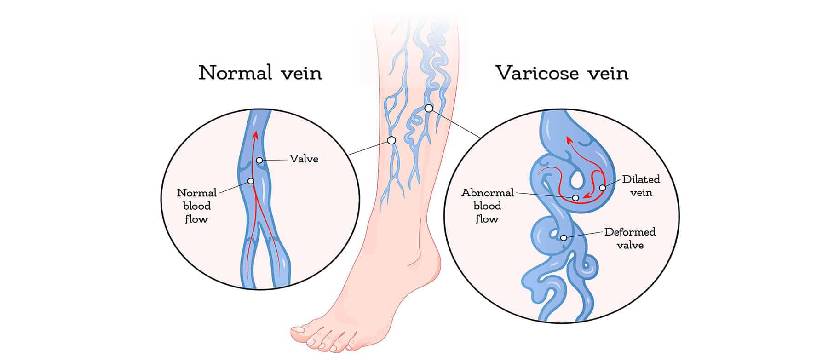Comprehensive Guide to Hair Transplantation for Women
Hair loss is a common concern among women, affecting up to 50% of all women over the age of 50. While there are numerous causes of hair loss, such as hormonal changes, genetics, and medical conditions, hair transplantation offers a permanent solution to restore hair density and volume.
What is Hair Transplantation?
Hair transplantation is a surgical procedure that involves transferring healthy hair follicles from a donor area to the recipient area where hair loss has occurred. During the procedure, individual hair follicles are harvested from the donor area, typically the back or sides of the scalp, and transplanted into small incisions made in the recipient area.
Understanding Female Pattern Baldness
Female pattern baldness (FPHL) is a common condition that affects millions of women. It is characterized by a gradual thinning of hair on the crown and top of the head. Unlike male pattern baldness, which typically results in a receding hairline, FPHL causes a diffuse thinning that preserves the hairline.
The causes of FPHL are complex and can include:
- Genetic factors: FPHL is often inherited and linked to certain genes.
- Hormonal factors: Changes in hormone levels during menopause and after childbirth can contribute to hair loss.
- Other factors: Stress, diet, aging and certain medical conditions can also play a role.
Causes of Hair Thinning in Women
- Hormonal Imbalances
- During Pregnancy & Childbirth,
- Menopause, or due to conditions like polycystic ovary syndrome (PCOS).
- Genetics
- Stress
- Nutritional Deficiencies
- Medical Conditions
- Medications
- Hairstyling Practices
Patterns of Female Hair Loss
Female hair loss can manifest in various patterns, which can be categorized into the following:
1. Diffuse Hair Loss: This is the most common pattern of hair loss in women, characterized by a general thinning of hair all over the scalp. It can be caused by factors such as hormonal imbalances, stress, or nutritional deficiencies.
2. Female Pattern Hair Loss (FPHL): This pattern is similar to male pattern baldness, with hair loss occurring primarily at the crown and the frontal hairline. FPHL is typically hereditary and is influenced by hormones, particularly androgens.
3. Alopecia Areata: This is an autoimmune condition where the body's immune system attacks the hair follicles, resulting in patchy hair loss. The patches can be small or large and can occur on any part of the scalp.
Types of Female Hair Loss
There are several types of female hair loss, each with its unique characteristics and causes:
1. Androgenetic Alopecia: This is the most common type of hair loss in women, caused by a combination of genetic and hormonal factors. It is characterized by a gradual thinning of hair, primarily at the crown and the frontal hairline.
2. Telogen Effluvium: This type of hair loss is typically triggered by a stressful event or a significant change in the body, such as pregnancy, surgery, or severe illness. It results in an increased number of hair follicles entering the resting phase (telogen), leading to excessive shedding.
3. Traction Alopecia: This type of hair loss is caused by excessive pulling or tension on the hair, often due to tight hairstyles or hair extensions. It can lead to hair loss along the hairline and the temples.
4. Alopecia Areata: As mentioned earlier, this is an autoimmune condition that results in patchy hair loss. It can be unpredictable and may progress to involve the entire scalp (alopecia totalis) or the entire body (alopecia universalis).
What is Androgenetic Alopecia?
Androgenetic alopecia, commonly known as male pattern baldness or female pattern hair loss, is a hereditary condition that affects both men and women. It's the most common cause of hair loss and is characterized by a gradual thinning of hair, typically starting at the temples or crown of the head in men and causing a widening of the central part in women.
Here are the example:
Stopping Thinning Hair Through Hair Transplantation
Hair transplantation is a surgical procedure that involves moving hair follicles from a donor area (usually the back of the head) to the areas affected by hair loss. This technique has proven to be an effective solution for both male and female pattern hair loss.
There are two main types of hair transplantation used for women:
Follicular Unit Extraction (FUE): In this method, individual hair follicles are extracted from the donor area using a specialized tool. The extracted follicles are then transplanted into the recipient area. FUE is less invasive than the traditional strip method and results in minimal scarring.
Follicular Unit Transplant (FUT): Also known as 'strip method,' FUT involves removing a thin strip of scalp from the donor area, which contains multiple hair follicles. The strip is then divided into individual follicular units and transplanted into the recipient area. FUT is less time-consuming than FUE but may result in a linear scar at the donor site.
Non-Surgical Alternatives Hair Treatment for Women
Before considering hair transplantation, it is important to explore non-surgical alternatives for hair loss. These treatments may help slow down or stop hair loss and promote new hair growth. Non-surgical options include:
- Topical medications: Minoxidil and finasteride are FDA-approved medications that can help slow down hair loss.
- Laser therapy: Low-level laser therapy can stimulate hair follicles and promote hair growth.
- Platelet-rich plasma (PRP) injections: PRP injections use your own blood to promote healing and stimulate hair growth.
Benefits of Hair Transplantation for Women
-
Permanent results: Hair transplantation provides a permanent solution to hair loss, as the transplanted follicles continue to grow hair for the rest of the patient's life.
- Natural-looking results: When performed by a skilled surgeon, hair transplantation can create a natural-looking hairline and hair density.
- Increased confidence and self-esteem: Restoring hair density can significantly boost a woman's confidence and self-esteem.
- Low maintenance: Once the transplanted hair grows out, it can be styled and maintained just like natural hair.
Candidates for Hair Transplantation
Women who are experiencing significant hair loss and are looking for a permanent solution are good candidates for hair transplantation. Ideal candidates include those with:
- Thinning or balding areas on the scalp
- Stable hair loss that is not expected to progress significantly
- Healthy hair in the donor area
- Realistic expectations about the results
Procedure for Hair Transplantation
The hair transplantation procedure typically takes several hours and involves the following steps:
1. Consultation: The surgeon will assess the patient's hair loss pattern, discuss the desired results, and determine the best type of hair transplantation for the individual.
2. Preoperative preparation: The patient will be instructed to avoid certain medications and activities that may interfere with the procedure.
3. Anesthesia: The scalp is numbed with local anesthesia to ensure the patient's comfort during the surgery.
4. Graft harvesting: In FUE, individual hair follicles are extracted using a specialized tool. In FUT, a thin strip of scalp is removed.
5. Graft preparation: The harvested hair follicles are cleaned and prepared for transplantation.
6. Recipient site preparation: Small incisions are made in the recipient area to receive the transplanted hair follicles.
7. Graft transplantation: The prepared hair follicles are carefully placed into the recipient site incisions.
8. Postoperative care: The patient will be given specific instructions on how to care for the transplanted hair and donor area.
Recovery and Results
After the hair transplantation procedure, the recipient area will be slightly swollen and may experience some discomfort. Most patients can return to their normal activities within a few days. The transplanted hair will initially fall out after about 2–3 weeks, which is a normal part of the healing process. New hair will begin to grow in the transplanted area over the next few months.
The final results of hair transplantation can take up to a year to become fully apparent. Most patients are satisfied with the results, which can last for a lifetime.
Recovery Tips and Aftercare
- After hair transplantation, it is important to follow the surgeon's instructions carefully to ensure proper healing and optimal results. Recovery tips include:
- Washing the hair: Avoid washing the hair for the first few days after surgery. When you do wash your hair, use lukewarm water and a gentle shampoo.
- Managing discomfort: You may experience some discomfort after surgery. Over-the-counter pain relievers can help manage discomfort.
- Protecting the newly transplanted follicles: Avoid touching or rubbing the transplanted area. Wear a headband or hat to protect the follicles from the sun and wind.
Cost of Hair Transplantation for Women
Hair transplantation is a surgical procedure that involves harvesting hair follicles from a donor area and transplanting them to a recipient area with hair loss. It is a common treatment for both men and women who are experiencing hair loss.
The cost of hair transplantation for women can vary depending on a number of factors, including the number of grafts required, the technique used, and the location of the clinic.
Average Cost of Hair Transplantation for Women in India
The average cost of hair transplantation for women in India is between Rs. 50,000 and Rs. 1,50,000. However, the actual cost may vary depending on the factors mentioned above.
Choosing a Hair Transplant Surgeon for Women
It is crucial to choose a qualified and experienced hair transplant surgeon for optimal results. Look for a surgeon who:
* Is board-certified in plastic and reconstructive surgery or dermatology
* Has extensive experience in hair transplantation for women
* Uses advanced techniques to minimize scarring
* Has a proven track record of successful results
Long-Term Maintenance
To maintain the health and appearance of transplanted hair, it is important to:
- Follow ongoing medical treatments: If you are using topical medications or other treatments to prevent hair loss, continue using them as directed.
- Make lifestyle adjustments: Quit smoking, manage stress, and eat a healthy diet to support hair growth.
Complications & Risk of Hair Transplantation
Hair transplantation is a relatively safe procedure, but like any surgery, there are some potential risks and complications. These include:
- Infection: The transplanted area may become infected.
- Bleeding: Excessive bleeding may occur during or after surgery.
- Scarring: The transplanted area may develop scars.
Conclusion
Hair transplantation can be a life-changing procedure for women struggling with hair loss. By understanding the underlying causes, exploring non-surgical alternatives, managing expectations, and following proper aftercare instructions, you can achieve a natural-looking result and restore your confidence. Remember, hair transplantation is not just about restoring hair growth, but also about empowering women to feel beautiful and confident in their own skin.








